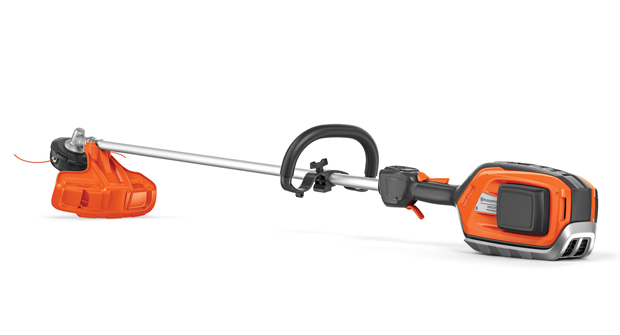With all the buzz around battery-powered handheld equipment in the landscaping industry, it’s important to remember that most companies still use gas-powered tools.
“Gas is still the overwhelming majority of what we see being used out in the field,” says John Powers, director of product management at Echo. “There are a couple of reasons for that. One of them is it provides the right level of performance and weight and cost to get the job done, and it’s what users are used to using.”
But that doesn’t mean battery power hasn’t earned a place with landscaping crews nationwide. As the technology continues to develop and grow, many experts are optimistic about its future.
Easing into it
According to Powers, asking a contractor about battery-powered equipment is like asking someone about their favorite pizza topping: “You’re going to get a bunch of different answers.”
And while some areas and municipalities — like California — are forcing the switch to battery-powered handhelds, Powers says many companies are now easing into the space by trying out tools like hedge trimmers that work well with batteries and can even surpass their gas counterparts.

Powers says choosing the right battery platform is critical when switching from gas. (Photo: Echo)
“What we’ve seen is rather than just try to make something that’s as close to gas equipment as possible, we’re going to make stuff that in some cases is actually better than the gas equipment,” he says.
Some tools that require less power and charging infrastructure allow landscapers to try out the technology with less risk, something that Todd Woodhams, vice president of product management at Senix, thinks will be beneficial in 2025.
Tools like battery chainsaws or hedge and string trimmers have made significant leaps in mimicking their gas counterparts, allowing end users to focus more on the benefits of battery, such as less maintenance, noise and environmental impact.
“With a transition from gas to electric, there are a lot users can benefit from, but I think the most important one is just the convenience and lack of having to maintain any product through its life cycle, whereas you can just put a battery on and do the job,” Woodhams says.
Work to do
While battery technology has come a long way, some improvements still need to happen before it becomes the right choice for every contractor, and Woodhams says certain tools still might not cut it right now.
“When it comes down to higher power tools that draw a lot — like blowers — there’s not really a good battery solution for that at this point in time,” Woodhams says.
Josh Dumas, Husqvarna’s product manager, landscaping and facility, agrees with this, saying the development of a high-powered battery backpack blower is one of the biggest thresholds to be surpassed before full battery adoption becomes viable for many crews.
“(When) the industry puts out a battery backpack blower that can really deliver top-tier performance, there could be a large shift toward battery in lots of other areas,” Dumas says.
Charging infrastructure is another area that Dumas says needs some work in 2025, as larger companies would require significant monetary, time and infrastructure investments to make a full switch.
“When you have 30 crews leaving each day and coming back, you now have hundreds of batteries you need to charge for the next day, and that’s very high energy consumption. You need to think about electrical circuits, physical space, fire protection, theft protection,” Dumas says. “It can be very difficult to figure out.”
Dumas, Woodhams and Powers all say their respective companies monitor the industry and work to find solutions to these issues, meaning battery technology will still grow more efficient and viable as the year progresses. Woodhams points to tabless cells, for example, as new battery technology manufacturers are developing to improve charging times, running temperatures and power output.
“I think you’re (eventually) going to see a new wave of battery technology coming into the market to leverage the tools that are out there,” Woodhams says.


